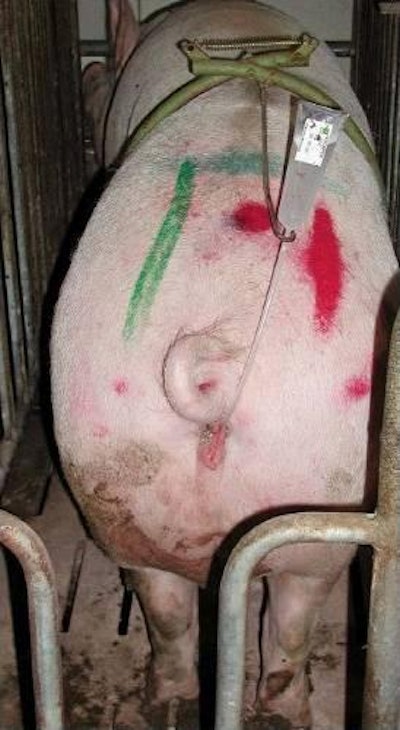
Checks in Germany on more than 3,500 inseminations at sow herds have produced some surprising results. Large differences in the AI procedure were found, not only between the farms. In certain cases the sows on the same unit were being inseminated at different times.
"We did not expect to see such a wide variety when we carried out this study," says Professor Steffen Hoy, of the institute for animal breeding at Justus-Leibig University in Giessen, Germany. "It really motivated our project for the development of an AI monitoring tool that herds could use to control the timing of their inseminations to obtain better results."
Control of artificial sow insemination timing
Monitoring in this instance, he continues, means a control of AI time by calculating what is produced. It therefore involves examining the records of sows inseminated at different times during an AI period in terms of conception rate, the number of farrowings per 100 inseminations, litter size (total piglets born and born alive) and a piglet index expressing the pigs born alive per 100 inseminated sows.
"The tool we have developed, to use both in sows and in gilts, helps to control the success of artificial insemination by comparing the date of AI with an optimal ‘green zone'," Prof. Hoy explains. "That is the period of time when fertilisation is possible.
"Take the duration of oestrus as being from first time the sow stands to the back-pressure test until her last standing heat. Usually, although not always, ovulation occurs at the start of the final one-third of this period. The optimal time window for AI is within a zone beginning 16-24 hours before ovulation and extending up to 4 hours after ovulation ends.
Aiming for a green zone
"So the control of insemination is possible by calculating the data on standing heat, to decide if the AI would be inside or outside this green zone'. It makes an accurate execution and registration of heat the pre-condition for success. There must be good detection of the animal's first and last standing heat in her oestrus.
"Very often, the final insemination is performed to coincide with the last standing heat. But the problem on many farms is that the breeding attendant does not look for a possible standing heat after the last AI. It can mean that insemination is not at the right time."
To show the principle of the green zone, Prof. Hoy has produced the schematic for the theoretical case of a Wednesday-weaning herd that inseminated too early the first of its inseminations having been outside the zone. He uses the example of a herd in the south of Germany to illustrate how the monitoring tool is being applied in practice. Its Heat Calendar relates to a routine in which weaning took place at 09:00 on Wednesday of every week and the sows received a PMSG injection 24 hours later to stimulate their return to oestrus. Standing heats were detected from Saturday onwards and the first AI began on the Sunday.
Red arrows on the chart refer to inseminations conducted within the optimal time window. Those identified by blue arrows were still within acceptable limits, but the red exclamation marks pick out 2 sows that were inseminated too late. Compare these indicators with the results for inseminations on 829 sows in a herd that weaned on Wednesday afternoons. Again setting the optimum as occurring from 16 hours before ovulation until 4 hours afterwards, some 77% of the sows were inseminated at the correct time.
Multiplying their average for liveborn pigs per litter by the percentage farrowing gave an index of 1006 piglets born alive per 100 sows inseminated. But the piglet index dropped to 901 for the 21.5% of inseminations performed too early, meaning that the first was done at the same time as the first standing heat on Monday morning. Worse still was the index of just 750, relating to the remaining 1.4% of sows. These were inseminated too late. They received only one insemination, on Monday morning, after their standing heat began some 24 hours earlier on the Sunday.
Dr Hoy and his team also have looked at the effect of the number of inseminations per oestrus. Again the piglet index tells the story. With sows as with gilts, inseminating twice was optimal provided that it was done within the right period of time.

















